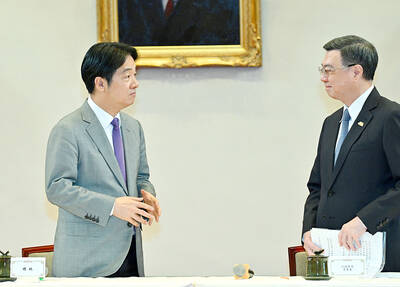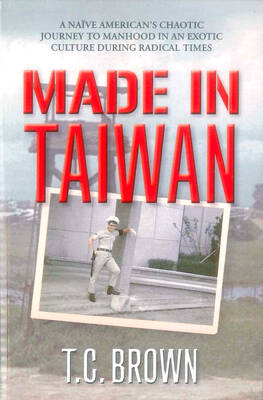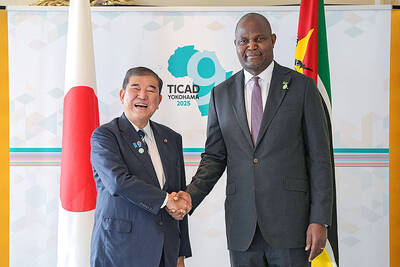Taiwan faces an energy trilemma: soaring AI-driven demand, pressure to cut carbon and reliance on fragile fuel imports. But the nuclear referendum on Aug. 23 showed how little this registered with voters, many of whom neither see the long game nor grasp the stakes.
Volunteer referendum worker Vivian Chen (陳薇安) put it bluntly: “I’ve seen many people asking what they’re voting for when they arrive to vote. They cast their vote without even doing any research.”
Imagine Taiwanese voters invited to a poker table. The bet looked simple — yes or no — yet most never showed. More than two-thirds of those who did favored restarting the Ma-anshan Nuclear Power Plant in Pingtung County, but turnout fell short of the legal threshold. The 29.53 percent voter turnout was one of lowest in Taiwan’s democratic history.

Photo: Reuters
Some voters thought only of earthquake risks, blackouts or carbon fuel dependence; others dismissed it as another partisan stunt. Few saw the bigger picture: Taiwan’s place in a world racing through an AI revolution.
SILICONE SHIELD
According to Fortune Business Insights, the global AI market was worth US$233 billion last year and is projected to reach US$1.8 trillion by 2032, growing nearly 30 percent a year. And Gartner adds that AI-driven data centers are the fastest-growing tech sector, with spending up 40 percent annually over the last two years.
Do people really understand what this means for Taiwan?
With nearly 80 percent of global foundry output, over 90 percent of leading-edge chips and about half of the world’s packaging and testing, Taiwan is the indispensable hub of the global semiconductor supply chain. Feeding directly into AI demand, Foxconn, Quanta, Wistron and others also supply around 80 percent of global servers and more than 90 percent of AI servers.
This indispensability has become Taiwan’s “silicon shield,” now double-plated with an AI layer with the hope of keeping China at bay. But in a world racing in a multi-trillion-dollar AI race, every kilowatt in Taiwan has become a matter of global security.
TAIWAN’S ‘AI ISLAND’ AMBITION
In poker, the ante is the entry price to sit at the table before the cards are dealt. Taiwan’s leaders have anted the island’s economic future on becoming an AI Island, a global semiconductor hub with hyperscale data centers. But that vision depends on a staggering amount of steady, reliable 24/7 power.
According to Greenpeace, electricity demand for AI chipmaking between 2023 and last year increased by over 350 percent.
“AI is a monster whose thirst for energy cannot be easily quenched,” warns Simon Wang (王熙蒙), president of TAITRA.
The House in this casino is not politics but physics and economics. No matter the slogans, the odds are set by hard numbers. That is why nuclear has suddenly appeared in Big Tech’s playbook, and why Nvidia’s Jensen Huang (黃仁勳) recently urged Taiwan to consider “all sources,” including nuclear as an “excellent option” to meet the inevitable surge in demand.
In this game, the players get two cards and three are face up. The three community cards in this case are Taiwan’s three constraints relating to the economy, environment and national security. You don’t choose these cards; you play around them.
The first card on the table is demand. AI and fabs need firm, around-the-clock power. TSMC alone consumed 8.4 percent of Taiwan’s electricity in 2023, a share projected to approach 24 percent by 2030.
The second card is decarbonization. Despite ambitious targets, 80 percent of last year’s generation was still thermal — 47 percent Liquid Natural Gas (LNG) and 31 percent coal. Renewables hovered around 12 percent, far below the 20 percent goal for this year, and lower still since nuclear’s 5 percent will be replaced with carbon-based fuels. Pegatron Corp Chairman Tung Tzu-hsien (童子賢) has stated that “Taiwan’s biggest problem is not a power shortage … Even more serious is the lack of carbon-free electricity.”
The third card is import fragility. Taiwan depends on imports for almost 98 percent of its energy, with LNG reserves measured in single-digit to low teen days. In the event of military blockade or price shock, the lights for companies won’t stay on for long.
WHO SITS AT THE TABLE?
The power players at the table are the high rollers and dealer. And a pit boss lurking in the shadows.
The high rollers are TSMC and Big Tech, who demand reliable, low-carbon power. Apple’s supply-chain rules are pushing TSMC toward 25 percent renewables by 2030 and 100 percent by 2040. Abroad, tech companies are already betting on nuclear: Amazon with a 1.92 GW nuclear deal through 2042, and Microsoft with the restart of Three Mile Island.
AI’s insatiable thirst for power is changing the politically correct language from “green” to “low carbon” energies. In other words, nuclear energy.
The dealer is Taipower. It runs the game under house rules but is staring at a NT$451 billion deficit caused by frozen rates and global LNG fuel spikes after Russia’s invasion of Ukraine that hiked Taipower’s spending on LNG. Taipower spends on average NT$3.19 per kWh and sells it below cost to keep energy prices low and inflation in check. But with Chinese Nationalist Party (KMT) opposition lawmakers blocking subsidies, prices will rise — or the company may face bankruptcy.
Lin Por-fong (林伯豐), chairman of an influential group of Taiwanese businesses called the Third Wednesday Club, has gone on record saying that a stable power supply and reasonable electricity prices “cannot be achieved without nuclear power.”
The pit boss is China, which does not sit at the table but can tilt the odds by choking imports or raising military pressure.
And then there is the table itself: the Taiwanese public. Their risk tolerance and turnout decide whether the game continues. Yet many didn’t vote in the referendum, seeing only another partisan nuclear fight rather than an AI-era survival bet. Many voters, like referendum volunteer Vivian’s father, understand that Taiwan “absolutely needs” nuclear power, but didn’t vote because the referendum was initiated by Taiwan People’s Party (TPP) Chair Huang Kuo-chang (黃國昌).
The green chips are renewables like wind, solar and hydro. They promise no fuel costs and climate value, but in the short run remain volatile, with intermittency and slow grid upgrades. According to Taipower’s 2025 report, their price is highest, running from NT$4.5–5.5 per kWh.
The gray chips are LNG and coal, still the backbone of Taiwan’s grid. They cost NT$2.5–3.5 per kWh and offer near-term reliability, but leave the island exposed to price shocks, carbon costs and import risk—an Achilles’ heel for both energy and national security.
The blue chips are nuclear, Taiwan’s cheapest baseload at NT$1.98 per kWh. They provide steady, low-carbon power with a small footprint, but remain haunted by waste politics and seismic fears.
WILD CARDS
Every poker game has a wild card. For Taiwan, the Joker cuts both ways: the politics of waste and seismic risk can shut down nuclear overnight, while fuel shocks or grid failures can bring down LNG. Meltdown fear and blackout trauma are both rare but catastrophic, and the public remembers the island-wide outages of 2021 and 2022.
Professional poker players don’t play ideology, they play probabilities and expected value. For Taiwan, that means diversification: expand renewables with storage, build a smarter and more distributed grid, increase fuel reserves, lessen fossil fuel over-reliance. And keep nuclear as insurance.
In response to referendum voters’ support to restart nuclear power, even President William Lai (賴清德) said the government would “not rule out” advanced nuclear under stricter conditions, marking a thawing of the ruling party’s longstanding platform of a “nuclear-free homeland.”
Energy analyst and former Taipei Times reporter Angelica Oung sketches a “reasonable ratio” for 2035: 15 percent nuclear, 25 percent renewables and 60 percent fossil fuels.
The wisest bet for an AI Island is a hedged stack, with fewer gray chips, more green, and a steady line of blue.
And if Taiwan cannot deliver? The AI House will not only move its high rollers, and their billions, elsewhere, but Taiwan will also lose its silicon-AI shield. These are the real stakes Taiwanese voters should understand.

Under pressure, President William Lai (賴清德) has enacted his first cabinet reshuffle. Whether it will be enough to staunch the bleeding remains to be seen. Cabinet members in the Executive Yuan almost always end up as sacrificial lambs, especially those appointed early in a president’s term. When presidents are under pressure, the cabinet is reshuffled. This is not unique to any party or president; this is the custom. This is the case in many democracies, especially parliamentary ones. In Taiwan, constitutionally the president presides over the heads of the five branches of government, each of which is confusingly translated as “president”

By 1971, heroin and opium use among US troops fighting in Vietnam had reached epidemic proportions, with 42 percent of American servicemen saying they’d tried opioids at least once and around 20 percent claiming some level of addiction, according to the US Department of Defense. Though heroin use by US troops has been little discussed in the context of Taiwan, these and other drugs — produced in part by rogue Chinese Nationalist Party (KMT) armies then in Thailand and Myanmar — also spread to US military bases on the island, where soldiers were often stoned or high. American military policeman

An attempt to promote friendship between Japan and countries in Africa has transformed into a xenophobic row about migration after inaccurate media reports suggested the scheme would lead to a “flood of immigrants.” The controversy erupted after the Japan International Cooperation Agency, or JICA, said this month it had designated four Japanese cities as “Africa hometowns” for partner countries in Africa: Mozambique, Nigeria, Ghana and Tanzania. The program, announced at the end of an international conference on African development in Yokohama, will involve personnel exchanges and events to foster closer ties between the four regional Japanese cities — Imabari, Kisarazu, Sanjo and

The Venice Film Festival kicked off with the world premiere of Paolo Sorrentino’s La Grazia Wednesday night on the Lido. The opening ceremony of the festival also saw Francis Ford Coppola presenting filmmaker Werner Herzog with a lifetime achievement prize. The 82nd edition of the glamorous international film festival is playing host to many Hollywood stars, including George Clooney, Julia Roberts and Dwayne Johnson, and famed auteurs, from Guillermo del Toro to Kathryn Bigelow, who all have films debuting over the next 10 days. The conflict in Gaza has also already been an everpresent topic both outside the festival’s walls, where